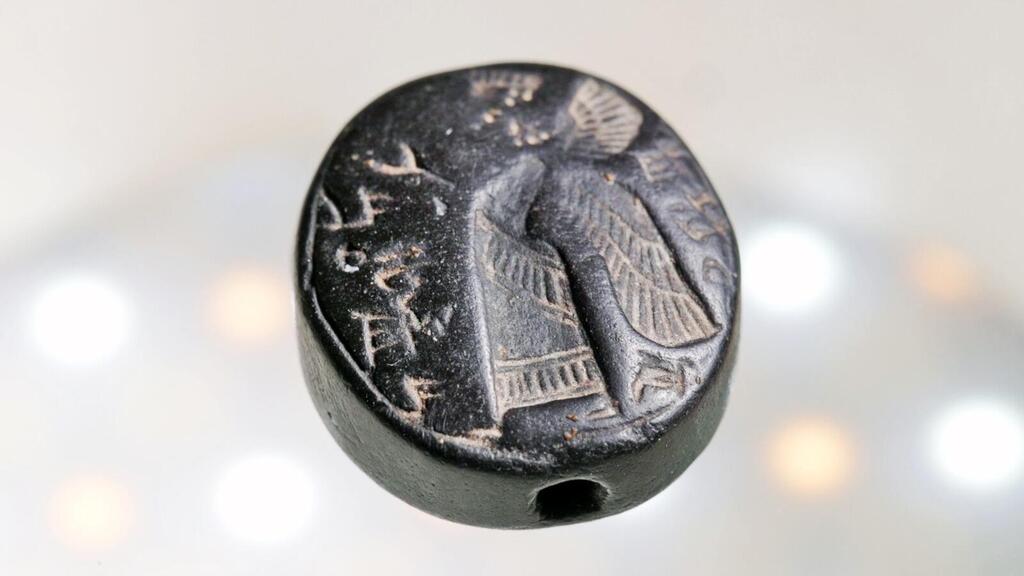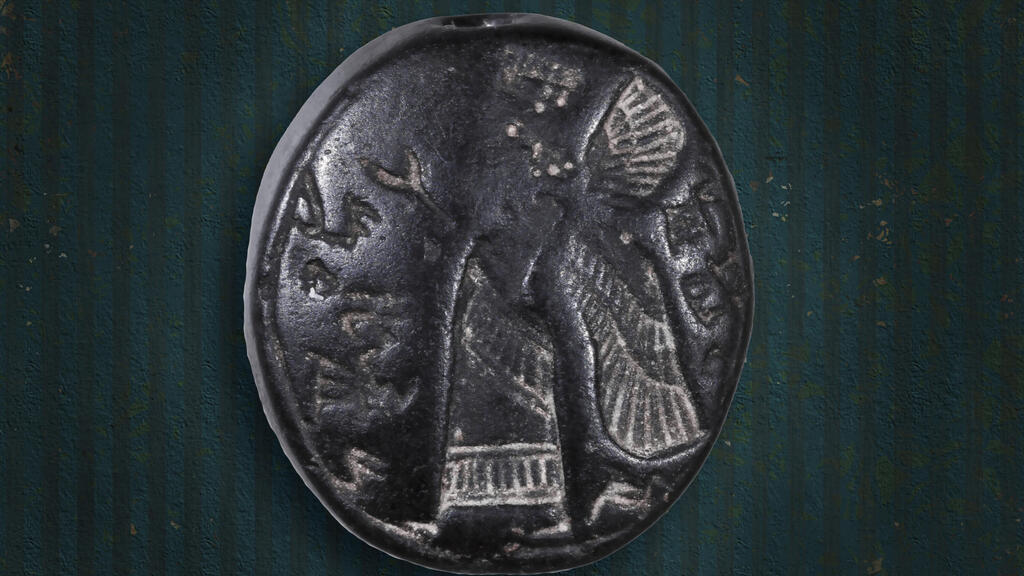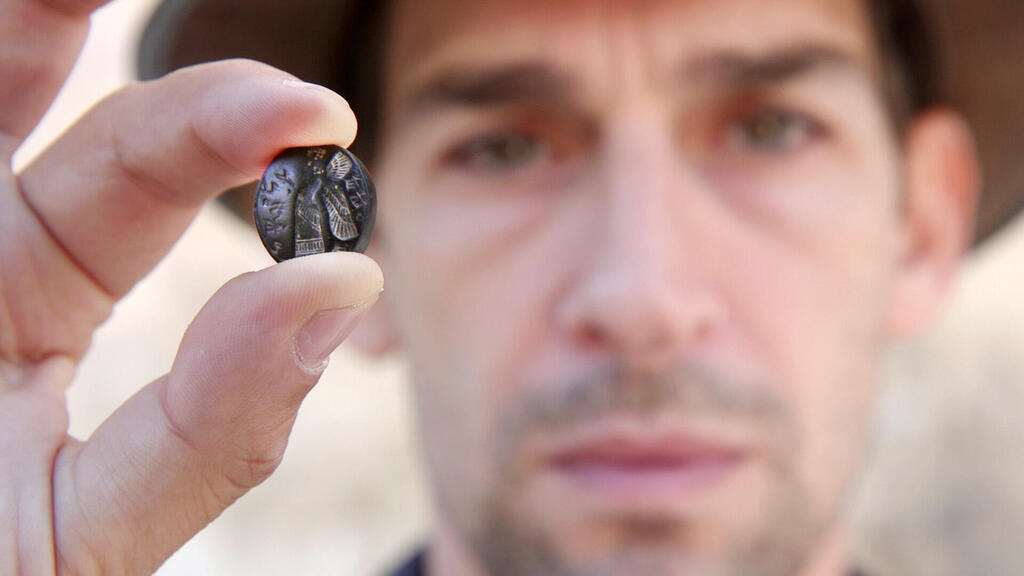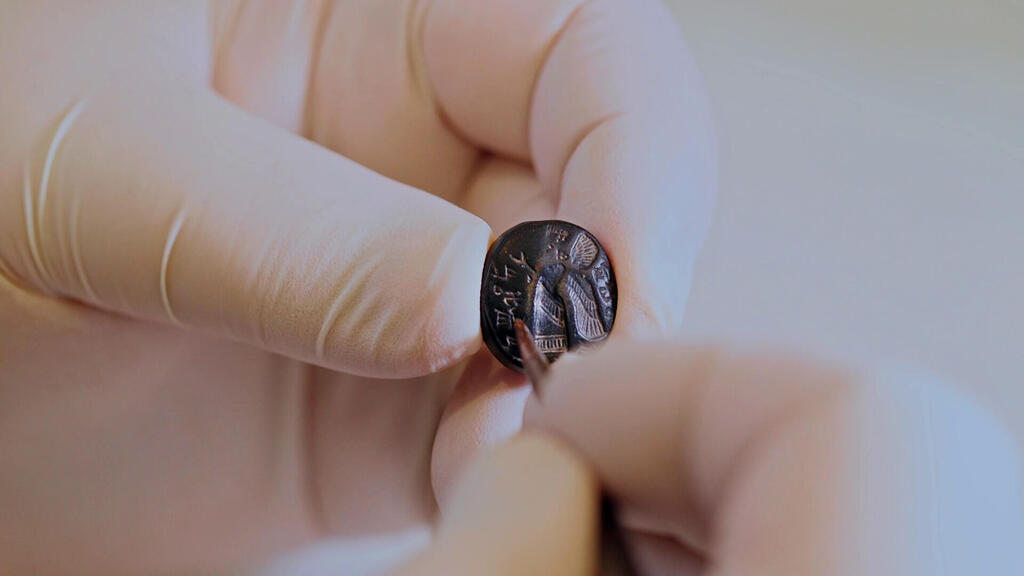Getting your Trinity Audio player ready...
A rare stone seal from the First Temple period, inscribed with ancient Hebrew script and depicting a winged figure, has been discovered near the Southern Wall in the Davidson Archaeological Garden, according to the Israel Antiquities Authority (IAA) and the City of David.
The seal, which belonged to a man named Yeho'azar, son of Hoshayahu, was likely used as a talisman and for sealing documents. The artifact features a profile of a winged figure, possibly a king, with an inscription that reads, "Belonging to Yeho'azar son of Hoshayahu."
IAA excavation directors Dr. Yuval Baruch and Navot Rom described the seal as "one of the most beautiful ever discovered in ancient Jerusalem." Dr. Filip Vukosavovic, an archaeologist with the IAA, called the find "exceptionally rare," noting that it's the first time a "winged genie" — a protective figure common in Neo-Assyrian art — has been found in Israeli archaeology.
The seal's design suggests it was crafted by a local artisan from Judah at the request of Hoshayahu, who held a high position in the Kingdom of Judah. Upon his death, his son Yeho'azar inherited the seal and added their names to it. The artifact reflects the Assyrian influence on Judah, as well as the local identity of its owner.
Prof. Ronny Reich of the University of Haifa noted that while the demon figure was meticulously engraved, the names were inscribed more carelessly, possibly by Yeho'azar himself. The discovery, according to Dr. Baruch, underscores literacy during the First Temple period and the cultural influence of the Assyrian Empire on Jerusalem.
Heritage Minister Rabbi Amihai Eliyahu praised the discovery, noting that it offers a glimpse into the Kingdom of Judah's history and its connections with surrounding cultures. "This remarkable find underscores Jerusalem's significance 2,700 years ago and brings us closer to understanding the past when the Temple still stood," he said.






